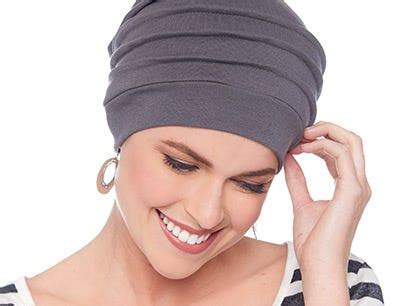Introduction
Cancer treatment can bring about significant hair loss, a distressing side effect that can affect both physical and emotional well-being. Head covers offer a comforting and stylish solution for cancer patients, providing them with a sense of security, confidence, and normalcy during a difficult time.

Statistics & Prevalence
According to the American Cancer Society, over 50% of people undergoing chemotherapy experience hair loss. This alarming figure underscores the critical need for comfortable and effective head covers.
Types of Head Covers
1. Scarves and Wraps (500+ styles)
* Soft, breathable fabrics like silk, cotton, and bamboo
* Variety of prints, colors, and patterns
* Versatile and affordable option
2. Beanies and Caps (300+ styles)
* Cozy and warm materials like acrylic, fleece, and cotton
* Unique designs and textures
* Ideal for cold weather
3. Turbans and Headwraps (200+ styles)
* Elegant and sophisticated fabrics like velvet, silk, and satin
* Pre-tied or self-tying designs
* Flattering for various head shapes
Benefits of Head Covers
1. Conceals Hair Loss:
Head covers provide an immediate solution for hiding hair loss, restoring a sense of normalcy and confidence.
2. Protects Sensitive Skin:
Post-treatment scalp can be sensitive and vulnerable. Head covers protect the skin from irritation and sun exposure.
3. Manages Body Temperature:
Head covers can help regulate body temperature, especially during chemotherapy, which can cause hot flashes.
4. Promotes Emotional Well-being:
Choosing and wearing a head cover can be an empowering experience, boosting self-esteem and reducing anxiety about appearance.
Considerations for Choosing a Head Cover
1. Comfort and Fit:
Select head covers that are soft, breathable, and fit snugly without causing irritation.
2. Style and Color:
Explore a wide range of styles and colors to find head covers that complement personal taste and wardrobe.
3. Material:
Consider the type of material based on skin sensitivity, climate, and desired feel.
4. Occasions:
Head covers come in different designs suitable for various occasions, from everyday wear to formal events.
Table 1: Comparison of Head Cover Types
| Type | Comfort | Style | Protection |
|---|---|---|---|
| Scarves and Wraps | Versatile, breathable | Wide variety | Moderate |
| Beanies and Caps | Cozy, warm | Casual, sporty | Good |
| Turbans and Headwraps | Elegant, sophisticated | Pre-tied or self-tying | Excellent |
Table 2: Materials and Their Benefits
| Material | Benefits |
|---|---|
| Silk | Smooth, hypoallergenic, temperature-regulating |
| Cotton | Breathable, absorbent, soft |
| Bamboo | Moisture-wicking, sustainable, anti-bacterial |
| Acrylic | Warm, soft, easy to care for |
| Fleece | Cozy, warm, comfortable |
| Velvet | Soft, luxurious, elegant |
Table 3: Head Covers for Different Occasions
| Occasion | Head Cover Type |
|---|---|
| Everyday wear | Scarves, beanies, turbans |
| Formal events | Turbans, dressy wraps |
| Exercise | Sweat-wicking headbands |
| Sleep | Soft, breathable caps |
Table 4: Tips for Maintaining Head Covers
| Tip | Explanation |
|---|---|
| Hand-washing | Use mild detergent and cold water |
| Air-drying | Avoid heat, as it can damage materials |
| Spot-cleaning | Treat stains promptly with a gentle solvent |
| Regular washing | Frequency depends on usage and fabric type |
Empowering Cancer Patients through Head Covers
Head covers are an integral part of cancer treatment, providing comfort, confidence, and a sense of normalcy. By embracing these stylish and protective accessories, cancer patients can navigate their journeys with dignity and empowerment.
Conclusion
Head covers for cancer patients go beyond mere accessories. They are symbols of hope, resilience, and the indomitable spirit that prevails in the face of adversity. With a wide range of styles to choose from, cancer patients can find solace and inspiration in the perfect head cover that empowers them on their healing path.
